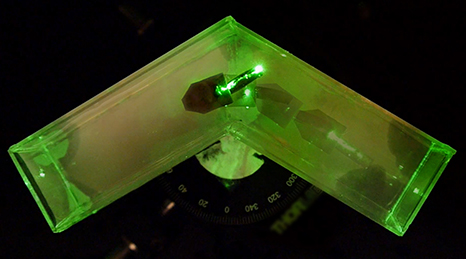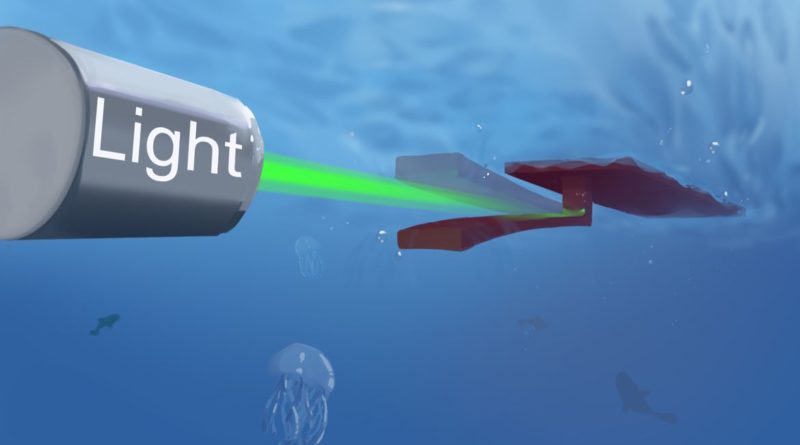Soft Swimming Robot Only Needs Light to Move
Meet the OsciBot. It’s a swimming robot that looks like a tiny surfboard with a tail attached. It comes from scientists at the UCLA Samueli School of Engineering who describe their new design in a paper. The most important part is that it doesn’t require batteries as the swimming robot is powered and steered simply by light. It’s made out of a soft material called hydrogel which is light-responsive and swells when put in the water.
The design is inspired by phototaxis (movement toward or away in the light source) which is found in nature. For example, moths and jellyfish are attracted towards light while earthworms and cockroaches are repelled by an exposure to light. The OsciBot operates on the same principle.
OsciBot Steered By Light
When light from a laser hits a spot on the tail, that spot heats up. The slight increase in temperature causes that part of the robot to eject some of its water and shrink. The tail then moves toward the light source. After it moves, the tail creates a shadow that cools the section where the laser originally made contact with the robot, which causes the tail to descend again.
As long as light hits the target spot, the process repeats, creating a flapping motion. Researchers observed the tail flapping 35 times per minute, fast enough to move the robot 1.15 times its body length per minute which is about twice as fast as comparable robots. The OsciBot is steered by repositioning the light.
“The beauty of the gel-based photo-oscillator is its design simplicity. The interplay between the ‘smart’ soft material and the environmental light enabled its self-regulated motion,” said the study’s lead author, Yusen Zhao, a UCLA doctoral student in materials science and engineering.

Swimming Robot Could Perform Surgery
Scientists feel that the robot’s design could make it valuable for performing things like surgically repairing tissues or performing drug delivery inside the body. Larger designs could be used for underwater propellers or wind sails that use sunlight to maneuver. Engineers could also tweak the design for speed and maneuverability.
“This is really a fundamental demonstration that direct and constant light can power and determine movement,” said Zhao. “It could be a step toward a variety of robotic designs that are untethered and powered solely by the available light in their surroundings, rather than relying on heavy batteries or power cables.”
Source: UCLA
Check out our articles on robots at the Tokyo 2020 Olympics and Hyundai’s exoskeleton.

